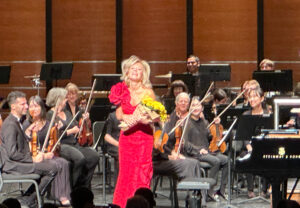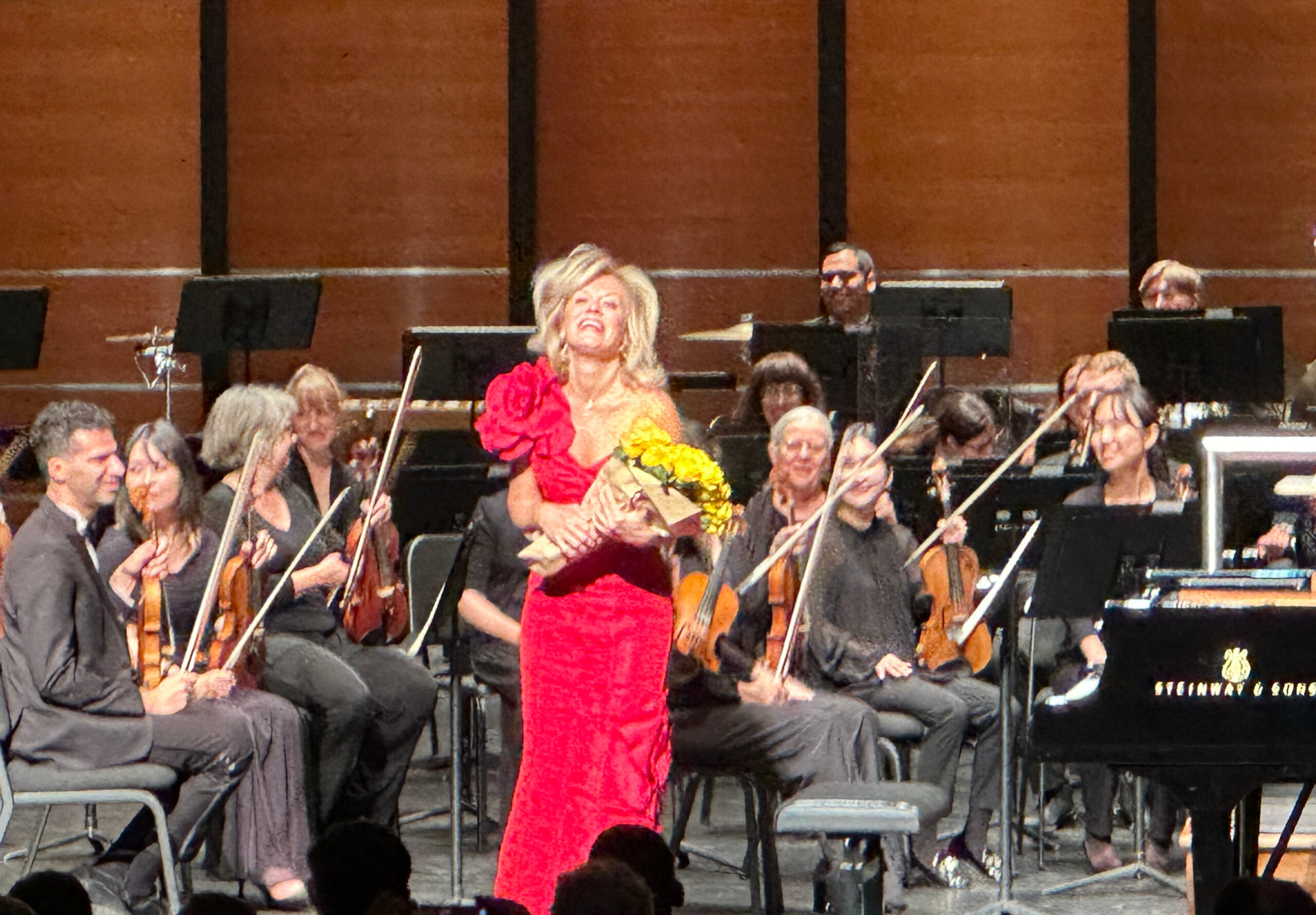Famed pianist Olga Kern brought the house down at the Long Centre this weekend. Her performance of the four Rachmaninoff piano concertos was a smashing way to begin the new season of the Austin Symphony Orchestra.
I attended Friday night, where she performed Concertos 1 and 3; the Saturday performance featured Concertos 2 & 4.
After a short, sleepy introductory piece by the orchestra (Vocalise by Rachmaninoff), the real event began with Kern striding onstage in a fabulous ballgown. She got right to work on Concerto No. 1 in F-sharp minor, which was finished in 1891.
It opens with what became his signature, used in all four of the concertos: a heraldic fanfare on the horns. In this case the piano responds at fill tilt, but quickly calms down with regard to volume, but not to its psychological state which exudes an aura of disturbance. This finally manifests itself in a pre-Freudian breakdown that sends the orchestra into a paroxysm of despair.
Realising what it has unleashed, the piano pulls back and tries to offer a coherent explanation for its feelings, masterfully expressed by Kern. The orchestra responds sympathetically. In a solo passage, the piano offer a wordy (ie lengthy) exposition of its thoughts: part terror and horror, part wonder and exuberance. ‘Is such a thing possible?’, responds the orchestra, as it tries to process the deluge of emotion.
In the second movement, the piano (seemingly sedated), wanders in an extended exploration of its feelings. Exuding empathy, the orchestra offers moral support. The piano finds itself in a safe space; the deft hands of Kern calmly delves into the piano’s innermost thoughts and finds a measure of peace. Having achieved a state of equilibrium, the piano and orchestra roam together in a state of Romantic expressiveness.
After a gown change, Kern resumed her command of the stage with Piano Concerto No. 3 in D minor, created in 1909. It wasn’t until a studio recording by Vladimir Horowitz in 1930 that it was really brought out to the general public as a very popular piece of music. Horowitz spent a lot of time with Rachmaninoff to get an idea of how it was supposed to be interpreted. Horowitz said his version most closely resembled Rachmaninoff’s performance “in its finely chiseled, almost steely delivery.” In memory of Rachmaninoff, Horowitz performed Concerto No. 3 with the New York Philharmonic in 1943, just a few months after the death of the composer. This extraordinary performance can be heard on You Tube (see below).
Apropos the 1930s, I envisioned the opening of this concerto as music to introduce a Miss Marple film (Agatha Christie’s first Miss Marple book was published in 1930). Quizzical but serious, it presages a multi-layered exposition of means, motive and opportunity. This reaches a confessional crescendo in a solo passage by Kern that both astonished and mesmerized.
As the second movement began, a lightness of being exuded by the orchestra prompts an unexpected response from the piano, as it leads the orchestra on a multi-coloured tour featuring both dramaturgy and redemption. A sweeping melody concluded this tour de force performance by both Kern and the Austin Symphony Orchestra, Peter Bay conducting. Kern ended the night with Rachmaninoff’s short but delightful Flight of the Bumblebee.
For the Horowitz version of Concerto no. 3, visit: https://www.youtube.com/watch?v=KqNvYmCRUVU
Visit AustinSymphony.org for tickets to future performances
Photo by C Cunningham

